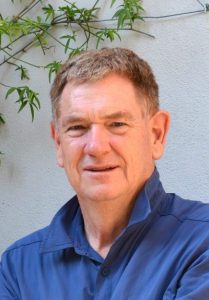The picture in the banner above is of the Sexton farm – Glen Norman – at Stacey’s Bridge circa 1914. The building is still there but no longer recognisable in this form. The Sexton family had settled in the Shire of Alberton in the 1860s and by the time of World War One were successful dairy farmers. The oldest son, Patrick Sexton, was one of the first to enlist, aged 18. He survived to April 1918 when he was killed on the Western Front.
At the same time, there were at least 2 Mills brothers working in the district. Patrick Mills, aged 26, also enlisted, in August 1915. He was killed in August 1916 at Pozieres, less than one year after enlisting. One of his brothers, Frederick Mills, who stayed in the local area went on to become a successful dairy farmer at Carrajung South. The Mills brothers came to the district from Gordon, some time before the outbreak of WW1. It was an exceptionally large family with at least 17 children. Five brothers enlisted in WW1 and 3 were killed, including Patrick Mills.
Both Patrick Sexton and Patrick Mills were great uncles of my wife, on her mother’s side of the family.
This connection begins to explain the genesis of Shire at War. There was always an interest in the family history focused on Yarram and the Shire of Alberton, even though direct family connections to the area had finished by the 1960s.
As well as the family history connection, my background in teaching Australian History at the secondary level – I am a retired, South Australian, high school principal – prompted me to go beyond the family and look at the impact of WW1 on the wider community, in this case the Shire of Alberton in Gippsland.
When I first started, the plan was to look in detail at all the men (79) whose names appear on the war memorial in the main street of Yarram. I was keen to employ quantitative analysis in the research and believed that this sample of 79 men would be large enough to map the essential characteristics of all those who enlisted from the Shire. However within a short time I realised there were other men who had been killed, also ‘local’, whose names were not on the war memorial. This in turn opened up the highly charged question of how the community, one hundred years ago, identified who was ‘local’. This concern was particularly relevant in the context of the rural – itinerant – working class who tended to be less ‘visible’. In the end, I decided that the only way to proceed was to identify all those men who, through a range of associations, were deemed at the time to be part of the community that was the Shire of Alberton. This approach took the overall number to approximately 800, a number far greater than the 446 men listed on the Shire of Alberton Honor Roll. Within the 800, there was a handful of women who served as nurses.
As well as looking at those who enlisted and served in the AIF, the research also looks at the community of the Shire. In particular, it seeks to describe the impact that the War had on this particular community and, most importantly, how the narrative of the War was controlled and disseminated in the community. It is a study of how support for the War was maintained, as well as the tensions and divisions within the community that the War either opened up or exacerbated.
It probably seems strange that a South Australian is researching and writing the social history of a community in Gippsland. I like to think that this apparent contradiction actually highlights the fact that ‘local’ in the context of Australian History is a problematic construct. The idea that Australians at the time of WW1 were tied precisely and completely to one geographic location is not supported by this research. And even for those who did identify closely with a particular location, the research shows that other forces – at state, national and Imperial levels – were far more powerful in shaping their experience of the War, including their response to it, than any ‘local’ factors.
I wish to acknowledge the help and encouragement I have received from the Yarram & District Historical Society, particularly from Melva James (deceased), Cate Remfry and Jim Kee (deceased June 2019). Linda Barraclough, local historian from Briagolong, Gippsland, has also been very generous with resources and critical insights.
page revised July 2016
philipcashen@gmail.com

